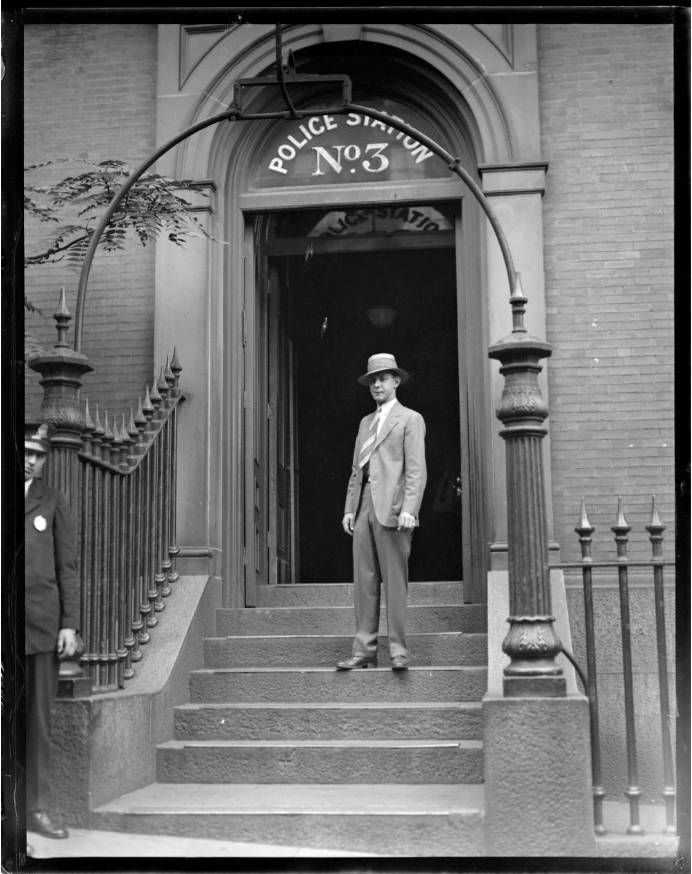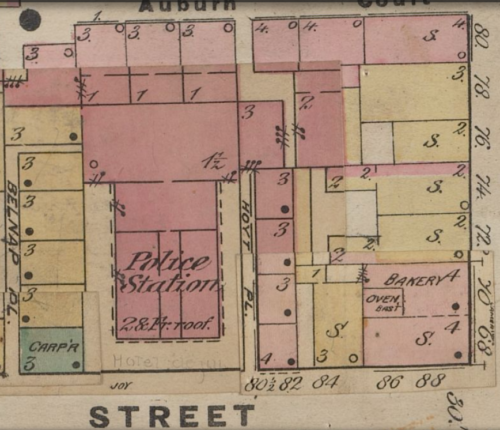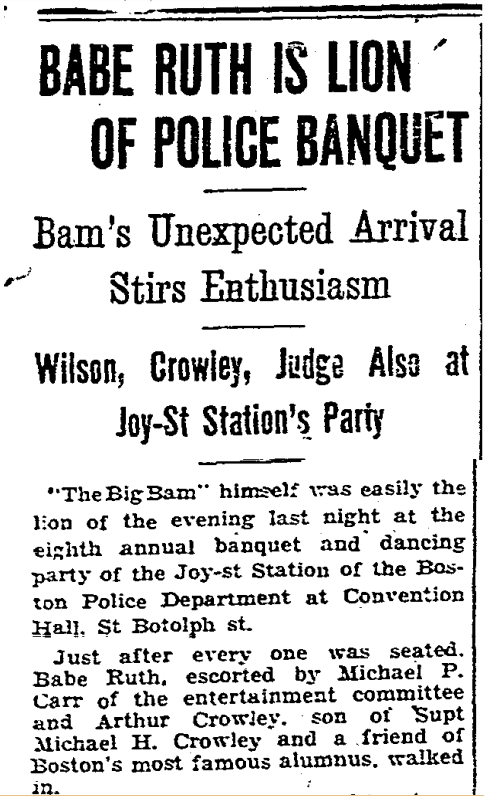Joy St. Police Station
The West End’s Police Station at 74 Joy Street was built in 1863 less than a decade after the formation of the Boston Police Department. It served an important role in the community until 1962, after closing in 1937 and reopening due to public demand. The building now serves as the home of the Beacon Hill Civic Association.
Police Station Number 3 was built on 74 Joy St. in the historic West End in 1863. The building, more often simply called the Joy St. police station, housed the Boston Police Department’s “third division” created when the modern BPD was formed in 1854. The Joy St. police station was designed by Gridley J.F. Bryant, the architect credited with the “Boston Granite Style”, who also designed Boston City Hospital (built in 1864). All of Boston’s police stations in the nineteenth century were built just before or during the Civil War: Station Number 1 on Hanover Street, Number 2 on City Hall Avenue, Number 3 on Joy Street, Number 4 on Lagrange Street, and Number 5 on East Dedham Street. The nineteenth-century West End, since the time it was West Boston, had a reputation for being a “tough” area. The Boston Globe in 1933 looked back on West Boston as “the old city’s Tenderloin” – ‘tenderloin’ being police slang for an area with the “juiciest cut” for crime – where “all kinds of dives ran more or less openly.” But as the West End grew over time, it shed this reputation at the same time that the Joy St. station played a more significant role in the neighborhood.
The thirty-five police officers stationed at Joy Street were responsible for patrolling Beacon Hill and the West End. The station had two floors, the first with jails that could hold up to thirty people (in addition to the offices), and the second with rooms for sleeping. Next door was a house for the horse-drawn patrol wagons that police officers then used to respond to calls. The Joy Street station’s presence in the West End was notable to residents, yet not by itself a deterrent of crime. On April 15, 1924, two men from the West End broke into the Balkan Bros. tailor shop on 106 Cambridge Street, just 40 feet away from the station. The Boston Globe noted that the instance of burglary was remarkable not only because the stolen goods were worth thousands of dollars, but also because of how close the police station was to the crime scene:
The robbery was the most daring that has occurred in the West End for many years, because from the premises entered the burglars, if they had the desire, could see behind the desk of the police station and also had an unobstructed view of the patrol wagon house, the next building. The burglars while inside the building could see policemen leaving and entering the police station.
Two suspects were arrested for the robbery the same day – taken from their beds into the Joy St. station.
Perceptions of crime in the West End developed over time. When the Joy St. police station set a record, on January 4, 1924, of “not one person arrested in the West End for drunkenness for…24 hours,” Superintendent Michael Crowley remarked, in the Globe’s words, that “the West End was always a pretty good place anyway, [and] that those who did make the trouble in that section came from other parts of the city.” West Enders were thankful for the service provided by the Joy Street station, such that on April 18, 1927 the West End Business Men’s Association, with residents, presented the flags of Massachusetts and the United States to the Joy Street officers as a thank-you gift. On November 21, 1928, Babe Ruth, having just won the World Series with the New York Yankees, made a surprise appearance at the eighth annual banquet of the Joy Street police station. The “Bambino” was visiting Boston on one of his regular ten-day vacations in the city; he spoke to the banquet, expressing his appreciation for the Boston Police Department being superior to police in all other cities except New York.
The Joy St. police station closed its doors the morning of August 28, 1933. This would be the shared fate of all five of Boston’s Civil War-era police stations, which closed within the previous three or four years after BPD consolidated divisions and relocated them to more up-to-date buildings. The Globe remarked that the Joy St. station, with its “shadowed, grimy wall” had been “the scene of unnumbered volumes of rich, red, racy human history.” The report compared the West End of the 1930s to the 1850s, noting that “although the district then wasn’t as ‘tough’ as history records it to have been in 1854, it was considered speedy enough–what with the ‘Diamond Lils’ of Howard and Bulfinch Sts, the Revere House “Grotto” follies and other places of amusement.” The preoccupation with pubs, bars, and drunkenness as contributors to crime is a recurring pattern in addition to reports of burglaries or murders.
After the West End’s police station closed, residents soon demanded that it return. City Councilor John Fitzgerald channeled the voice of West Enders when he advocated for a permanent police unit at the old Station Number 3; Fitzgerald communicated with Police Commissioner Joseph Leonard and suggested that the old Joy Street building be reopened as a substation at the very least. In the 1930s, police continued using the patrol wagon house at Joy Street for responding to calls from the Milk Street and North Street stations. On February 6, 1935, the Globe reported that “Police Commissioner Leonard is favorable to the demands of West End residents that the old Joy-St Police Station be reopened and reassigned its old territory, which for 80 years was Division 3 of the Boston Police Department.” On September 3, 1937, the Joy Street station reopened in the West End at the order of Police Commissioner Joseph F. Timilty, who reassigned 99 officers from stations on Milk Street and in the North End to the West End.
The Joy St. police station closed its doors once again in 1962, at the conclusion of the urban renewal period in the West End. The Beacon Hill Civic Association acquired the building for its headquarters in 1966.
Article by Adam Tomasi; Edited by Sebastian Belfanti
Source: Society of Architectural Historians; Leventhal Map & Education Center; Tufts Digital Library; The Cultural Landscape Foundation; ProQuest/Boston Globe (“No Drunks in West End: Joy-St Station Sets Up New Police Record,” January 4, 1924, page A20; “Burglary Opposite Joy St. Police Station,” April 15, 1924, page 1A; “Flags of U.S. and Massachusetts Given to Police of Joy-St Station,” April 19, 1927, page 24; “Babe Ruth is Lion of Police Banquet,” November 22, 1928, page 16; “May Reopen Joy-St Station,” February 6, 1935, page 1)











